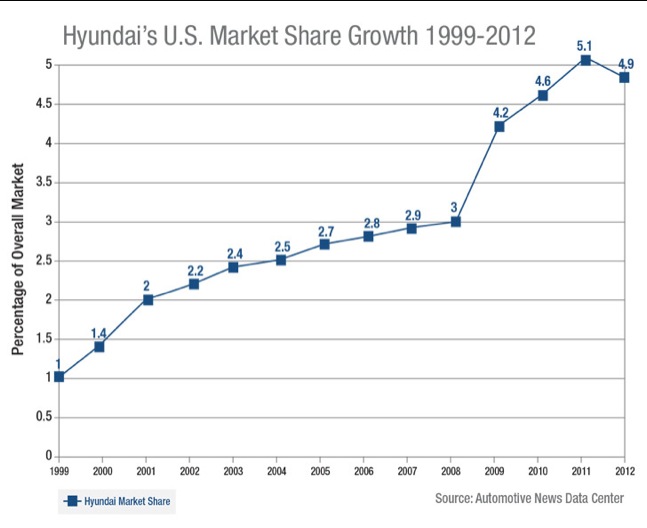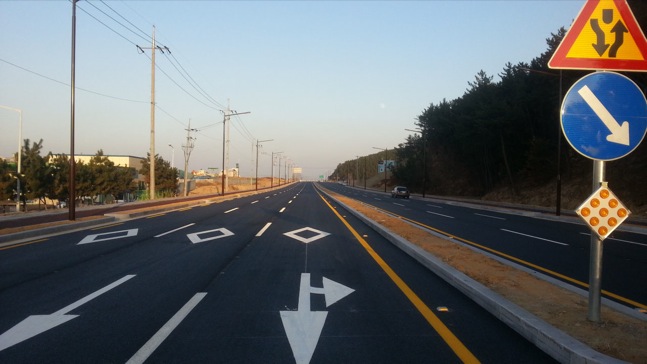





About a decade ago, the Hyundai Motor Group (which includes Kia) learned that in order to sell cars, especially to Americans, you had to compete on more than just price.
Their original sales pitch focused on free maintenance, low sticker prices, and “sensibility.” Minimal attention, however, was given to comfort, driving enjoyment, styling, or quality. And with a product portfolio that included the Hyundai Excel, the four-wheeled equivalent of cold toast, there wasn’t much to rave about beyond the outrageously low $5000 sticker price (just over $10500 today).
Fast Tube by Casper
After the Excel overpromised and hilariously underdelivered, the public brushed aside Korean cars as conveyances for high school dropouts with bad credit, the polar opposite of Saab owners who were, at the time, the envy of the industry with high incomes, intense brand loyalty, and college degrees. If architects bought Saab 900s and BMW 325s, pot dealers took home Excels, Accents, and Scoupes. Nothing says luxury and refinement quite like a drooping headliner that stinks of weed and a pile of fast food bags on the passenger seat.
That all changed with the introduction of the ten-year, 100,000-mile warranty, more or less a binding contract that said “You can trust us.”
Indeed, Americans gave Korean cars a second look and discovered that somewhere around the turn of the century, Hyundai and Kia went from has-beens to contenders with agreeable [if unoriginal] designs, dramatically improved reliability, and driving dynamics that could be described as… pretty adequate?

Market share was on the rise from 2000-2010 as Hyundai and Kia introduced a variety of CUVs, SUVs, hatchbacks, sedans, and even fully-trimmed, Lexus-competitive luxury cars like the Hyundai Equus. As Cadillac abandoned its Northstar V8, at one time a showcase of GM’s powertrain engineering, Hyundai rose to the occasion with the DOHC 5.0L Tau V8, good for nearly 430hp and 376 lf-bt of torque.
Think about that. The same Korean company that built rolling heaps of garbage 20 years ago managed to crawl out of the sewer and come up with luxury cars that rival Cadillac, Lincoln, Acura, Lexus, and Mercedes-Benz. Whether Hyundai actually competes with those luxury brands is another question for another article, one that involves an analysis of consumer perception, brand heritage, dealer experiences, and transaction prices.
But what matters is that the engineering is there. They did it.
This history lesson brings us to the most important point — with the talent they clearly have at development facilities worldwide, Hyundai and Kia have the means of building an impressive, lightweight sports car, something that could compete with the Mazda Miata and the Scion FRS, or perhaps the Corvette.
And why should they build one? Because the competencies gained trickle into the rest of the product portfolio.
With Cadillac’s new lightweight Alpha platform, GM learned how to develop highly refined cars that are both agile and efficient, two traits that previously eluded Cadillac, enabling it to compete directly with European brands. Alpha is also expected to underpin the next Camaro, removing hundreds of pounds, improving fuel economy, and dramatically improving handling. Mazda’s Miata has influenced the driving enjoyment of everything the little Japanese manufacturer makes from hatchbacks to SUVs, offering the same “jinba ittai” horse and rider cohesion in every vehicle they build. Back in the 90s, Chrysler gained significant advantages in development times, manufacturing efficiencies, and chassis engineering, in addition to increased interest from investors, all thanks to the Viper.
To build a sports car, manufacturers need a certain kind of skill and competence, one that Hyundai lacks as evidenced by outsourcing the 2015 Genesis sedan’s suspension tuning to Lotus. Unfortunately, Lotus’s involvement came too late in the development process, resulting in a luxury sedan that’s comfortable and soft but lacking in athleticism, taking over where the Lincoln Town Car left off.
This deficiency affects both Hyundai and Kia from the Accent on up to the Equus. Every Hyundai or Kia I’ve driven including but not limited to the Borrego 4×4, Santa Fe CUV, Kia Optima, Kia Rio, and Elantra have the same problem — they ride either too harshly or too softly, unable to find an ideal balance between body control and ride comfort.
Similar complaints were noted in several comparisons between the first-generation Genesis sedan and the second-generation Chrysler 300, giving Chrysler the nod for a better-sorted chassis.

Exacerbating the problem are South Korea’s roads, smooth as glass and exceptionally well maintained, a stark contrast to the urban craters of Chicago and Detroit or the crumbling surfaces of California freeways. It explains why so many Korean cars are lacking in suspension travel.
—————————————
As for design, Kia has demonstrated tremendous progress under the direction of Peter Schryer, introducing the Stinger concept car that debuted at the 2014 Detroit Auto Show. With a shape that combines athletic footwear with a torpedo, it takes the Kia brand in a sportier and more futuristic design direction than Hyundai, adopting European standards for proportions and surfaces.

Promising to weigh under 2900 lbs with the heart of a 315hp turbo four, this could be the halo car that gives the Hyundai Group, particularly Kia, the emotional appeal it currently lacks, especially if competencies gained in the development of the Stinger find their way into the rest of H/K’s product DNA.
Instead of buying Hyundais and Kias for the warranty or price, we might start buying them because we actually love them, because they may have evolved beyond simple conveyances into forms of human expression and desire.
In thirty years, will we see people restoring classic Korean cars? Maybe. It starts with the Stinger.
Fast Tube by Casper
Leave a Reply